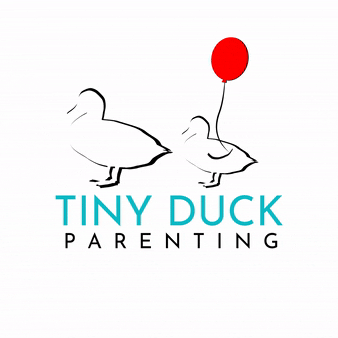The transition from crib to bed for your toddler’s sleep is a significant milestone in a little one’s life, marking the beginning of more independence in their sleeping routine. As parents, it’s essential to approach this change with patience, consistency, and a well-thought-out plan. In this guide, we’ll explore the key aspects of moving your toddler from a crib to a bed, emphasizing the importance of a clear bedtime routine, proper sleep schedules, and effective strategies to keep your toddler peacefully sleeping through the night.

Establishing a Clear Bedtime Routine
One of the crucial elements in transitioning your toddler to a big kid bed successfully is establishing a clear bedtime routine. A consistent routine helps signal your child that it’s time to wind down and prepare for sleep. This might include activities like a relaxing bath, reading a bedtime story, singing a lullaby, or engaging in a calming pre-bedtime ritual.
A well-established bedtime routine creates a sense of security and predictability, making the transition from a crib to a toddler bed smoother for your little one. It also sets the stage for a positive association with bedtime, making it more likely that your child will willingly go to sleep in their own bed and stay there throughout the night.
Check out our Toddler Bedtime Routine Chart to make your routine consistent and the perfect bridge from awake to asleep!
Utilizing Proper Wake Windows
Proper wake windows play a crucial role in supporting healthy sleep patterns for toddlers. A wake window refers to the length of time a child can comfortably stay awake between naptime and bedtime. Typically, a wake window of around 5 hours between nap wake-up and bedtime is suitable for toddlers.
By paying attention to your child’s individual needs and adjusting wake windows accordingly, you can ensure that they are neither too overtired nor under-rested when bedtime arrives. This careful balance contributes to a smoother transition from a crib to a toddler bed and minimizes the likelihood of bedtime battles.
Implementing a Consistent Sleep Schedule
Consistency is key when transitioning your toddler from a crib to a bed. A consistent sleep schedule helps regulate your child’s internal clock, making it easier for them to fall asleep and stay in bed all night long. Aim to establish a bedtime that allows for adequate sleep based on your toddler’s age.
Additionally, maintaining a consistent sleep schedule involves waking your toddler up at the same time every morning, even on weekends. This helps reinforce their natural circadian rhythm, making it easier for them to settle into a predictable sleep routine.
Effective Strategies for Keeping Your Toddler in Bed
During the transition phase from a crib to a toddler bed, it’s common for toddlers to test the newfound freedom of their bed by getting up and wandering around. Here are some effective strategies to encourage your toddler to stay put and sleep in their own beds:
- Sleep Training: Introduce gentle sleep training techniques to help your toddler learn how to fall asleep independently in their new twin bed. Gradual methods, such as the Ferber method or the Chair Method, can effectively teach your child to self-soothe and fall asleep without your direct presence. Check out our Week to Sleep program for the best results in teaching your toddler how to choose to stay in their bed!
- Respond to Nighttime Wandering: Respond consistently and calmly if your toddler comes out of bed during the night. Avoid creating an environment that encourages extended interaction, keeping the focus on returning them to their twin bed. Remember, the only thing your toddler needs in the middle of the night is sleep.
- Walk Them Back to Bed: When your toddler ventures out of their bed, gently guide them back without engaging in prolonged conversations or play. Be patient and persistent, reinforcing the idea that nighttime is for sleeping in their own bed.
- Door Open or Closed: Decide whether the bedroom door should be open or closed during the night. Some children find comfort in having the door slightly ajar, while others may feel more secure with a closed door. Experiment with both options to find what works best for your toddler.
- Stay Calm and Consistent: Consistency is crucial in reinforcing the message that bedtime is non-negotiable. Stay calm and composed during nighttime disruptions, following the same routine each time you guide your toddler back to bed.
Pro-Tip:You regulate your toddler’s feelings and emotions! So, if you remain calm and quiet and take deep breaths, they will eventually calm down as well.
The Importance of a Sticker Chart
Consider implementing a sticker chart to motivate your toddler to stay in bed. Create a visual representation of the sleep expectations, and reward your child with a sticker each morning they successfully sleep in their own bed all night long. After accumulating a certain number of stickers, celebrate their achievement with a small, meaningful reward.
The sticker chart not only provides positive reinforcement but also empowers your toddler to take ownership of their sleep routine. It creates a sense of accomplishment and pride, making them more inclined to cooperate with the established bedtime rules.
Transitioning your toddler from a crib to a bed is a significant step towards fostering independence and healthy sleep habits. By establishing a clear bedtime routine, following proper wake windows, and implementing consistent sleep schedules, you set the stage for a seamless transition. Be patient, stay consistent, and use effective strategies to guide your toddler back to bed if they stray during the night. Remember, the only need they have is sleep, and with the right approach, you can help them develop lifelong habits of restful and rejuvenating sleep.
If you find the transition challenging, know that seeking guidance from a toddler sleep consultant can provide invaluable support. These professionals specialize in helping families navigate the complexities of toddler sleep, offering personalized strategies and advice tailored to your child’s unique needs.
If you’re struggling with your toddler’s sleep habits, consider contacting Tiny Duck Parenting for expert guidance and resources. With the proper support, you can confidently navigate this milestone and establish healthy sleep habits that benefit the entire family.





